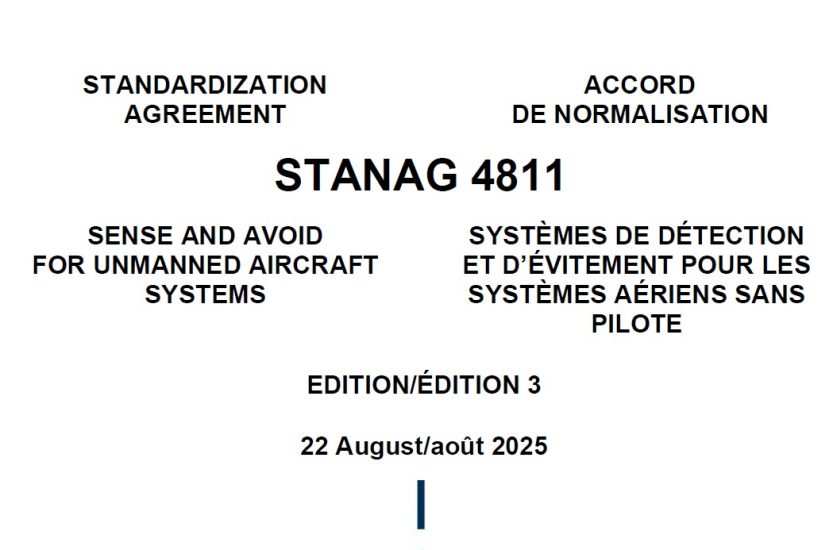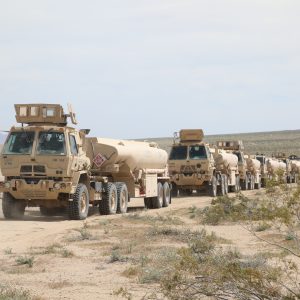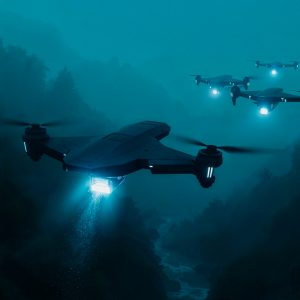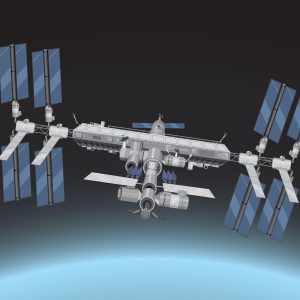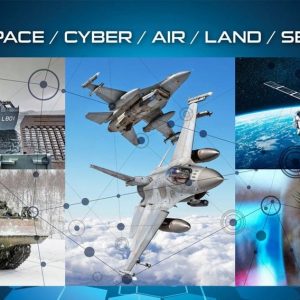A newly ratified NATO AEP‑107 “Sense & Avoid” standard now mandates performance and interoperability requirements for Unmanned Aircraft Systems (UAS) in unsegregated airspace — a critical step toward enabling safe, cross‑allied integration of drones and autonomy in shared airspace.
Key Facts
| Item | Detail |
|---|---|
| Standard | Becomes effective upon ratification by member states; many nations are now updating to the new standard |
| Scope | Sets minimum functional and performance requirements for Sense & Avoid (SAA) systems on UAS operating in unsegregated airspace |
| Effective | Despite technical significance, only limited trade coverage so far, mostly in the unmanned/aviation regulation niche media |
| Relationship | Despite technical significance, only limited trade coverage so far — mostly in the unmanned/aviation regulation niche media |
| Coverage | AEP‑107 (Edition B) with companion AEP‑107.1 (Edition A) was formally published/ratified by NATO nations |
Context
Unmanned Aerial Systems increasingly must fly beyond limited segregated test corridors and into mixed, civil‑shared airspace. To do so safely, they need reliable sense & avoid (SAA) capability — the ability to detect, classify, predict, and avoid collisions with manned or other traffic.
Until now, no universally accepted performance standard has existed across NATO that ensures interoperable SAA across member nations’ airspace. National regulators adopt bespoke requirements, which hinder cross‑border drone operations or allied interoperability in contested theatres.
The new AEP‑107 standard (and companion documents) addresses that gap by defining minimum performance, functional requirements, interface definitions, and messaging standards for onboard systems. This enables compatible SAA behaviour across platforms and states, reducing barriers for multinational UAS operations.
While UAV and autonomy topics have seen coverage, the specific leap in allied standardisation for SAA is lightly treated in major defence media — likely because adoption and implementation remain nascent.
New development
In August 2025, NATO formally published AEP‑107 (Edition B), along with the companion AEP‑107.1 (Edition A), providing updated Sense & Avoid (SAA) requirements for unmanned aircraft systems in unsegregated airspace. :contentReference[oaicite:4]{index=4}
The update is considered a “historic step” toward harmonising SAA capabilities across Europe and North America. :contentReference[oaicite:5]{index=5}
LinkedIn commentary and industry notices confirm that the standard includes message formats, performance metrics (e.g. detection ranges, time to maneuver, sensor performance thresholds), and inter‑system interface requirements. :contentReference[oaicite:6]{index=6}
Some nations have started internal working groups to begin adaptation of national UAS regulations to align with AEP‑107. :contentReference[oaicite:7]{index=7}
That said, adoption will depend on national ratification, certification authority alignment, and retrofit / new platform compliance — meaning implementation is still in its early phase.
Technical / operational implications
Interoperability becomes mandatory. UAS from different NATO nations or contractors that meet AEP‑107 will be able to communicate SAA decisions, share collision avoidance protocols, and transfer safe‑maneuver commands in shared airspace.
Hardware and software upgrades required. Existing UAS may need new sensors, radar/optical fusion algorithms, processing power, real‑time collision prediction systems, and interface modules to meet the standard.
Certification complexity. National aviation (or military) authorities must adopt the standard and define certification paths, test requirements, safety cases, and compliance verification.
System integration risk. Achieving low latency, robust sensing, and safe maneuver decisions in cluttered or constrained airspace is nontrivial, especially for smaller UAS with SWaP (size, weight, power) constraints.
Cross‑domain coordination. SAA must coordinate with air traffic management, command & control, UAS mission planners, and possibly deconfliction with manned aircraft or other drones.
Legacy fragmentation. Until full adoption, disparities may persist: some states may delay, maintain exceptions, or diverge, leading to patchy interoperability.
Programme / procurement angle
The new AEP‑107 standard opens opportunities for UAS OEMs, avionics suppliers, sensor integrators and software developers to design or upgrade SAA modules certified under allied frameworks.
Future NATO or EU tenders for unmanned systems may require AEP‑107 compliance, giving early movers a competitive edge. Conversely, noncompliant platforms may face operational restrictions in allied airspace.
Internal defence R&D and prototyping efforts should begin benchmarking to AEP‑107, building testbeds, and collaborating with certification authorities to shape national adoption. Defence Agenda will watch for RFI/BAA notices invoking AEP‑107 compliance — see our analysis hub and news hub for alerts.
Risks / alternatives
- Slow national ratification. Some NATO states may delay adopting or validating AEP‑107, slowing interoperability goals.
- Certification fragmentation. Varied implementation paths or derogations may create loopholes or inconsistencies.
- Technical barrier for small UAS. Meeting sensor and compute requirements may be too heavy or costly for small platforms.
- Alternative frameworks. Regional regulators or aviation authorities (e.g. EASA, FAA) may pursue divergent SAA standards, risking fragmentation.
- Legacy fleets left behind. Older platforms may be expensive or impractical to retrofit, creating dual classes.
Implications / Next
As AEP‑107 becomes the baseline for allied UAS sense & avoid interoperability, unmanned operations across NATO airspace will become more feasible and safer. The standard can facilitate coalition drone missions, multinational unmanned exercises, and cross‑border UAS operations in contested theatre.
Early movers — OEMs, sensor firms, avionics developers — should begin AEP‑107 compliance efforts now, engage with national regulators, and prepare for certification transitions.
Defence Agenda will monitor national adoption, certification rulings, and early testbed implementations, and publish comparative studies of how NATO’s SAA standard aligns with EASA, FAA or national rules. Watch for updates in our news and standards streams.
Further Reading
- Internal: Defence Agenda — News hub: defenceagenda.com/news
- Internal: Defence Agenda — Analysis hub: defenceagenda.com/analysis
- External: UnmannedAirspace: NATO publishes new sense‑and‑avoid standard for UAS
- External: UAS Vision: NATO publishes new sense‑and‑avoid standard
- External: LinkedIn notice on AEP‑107 Edition B / 107.1 Edition A

